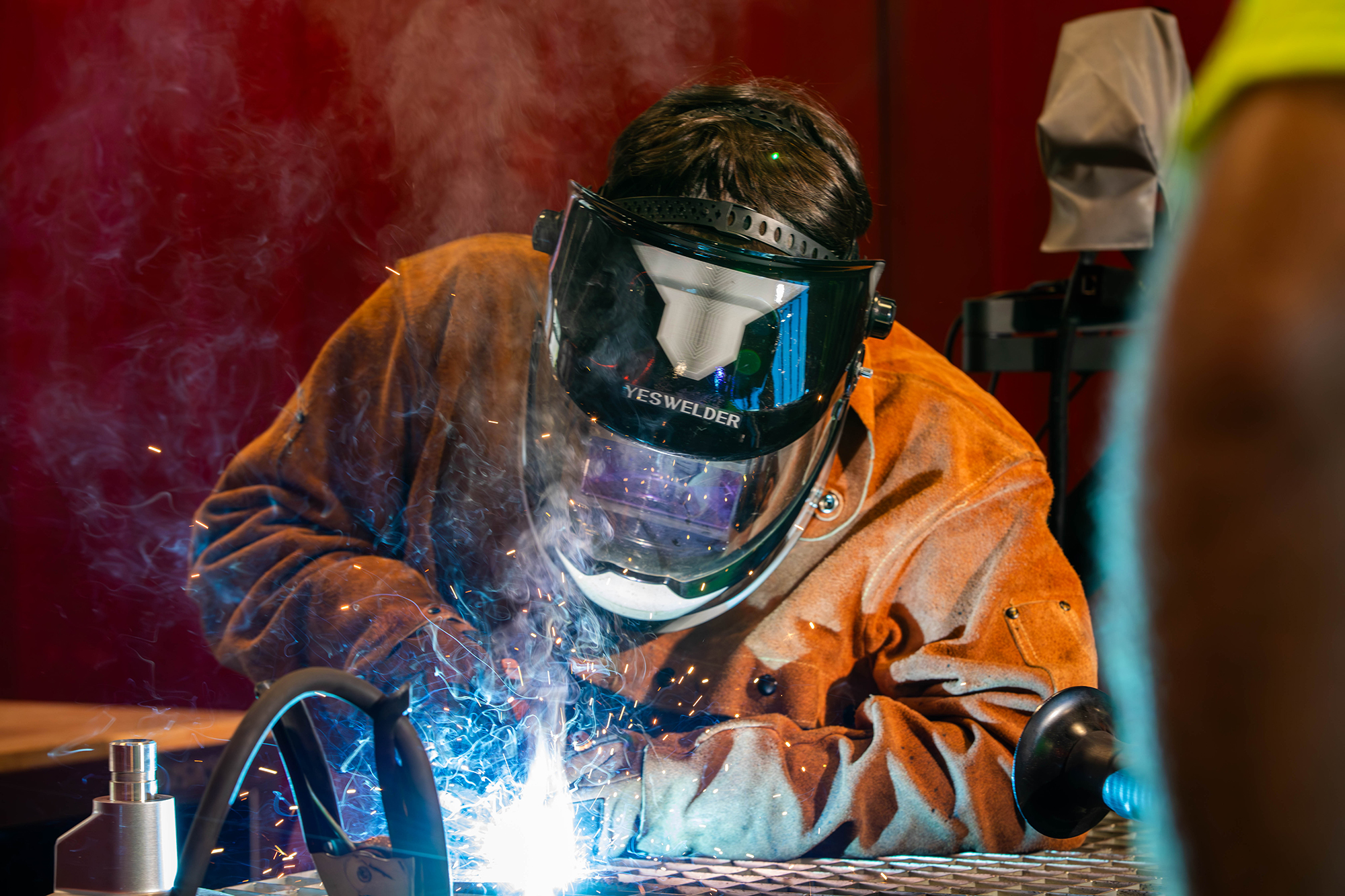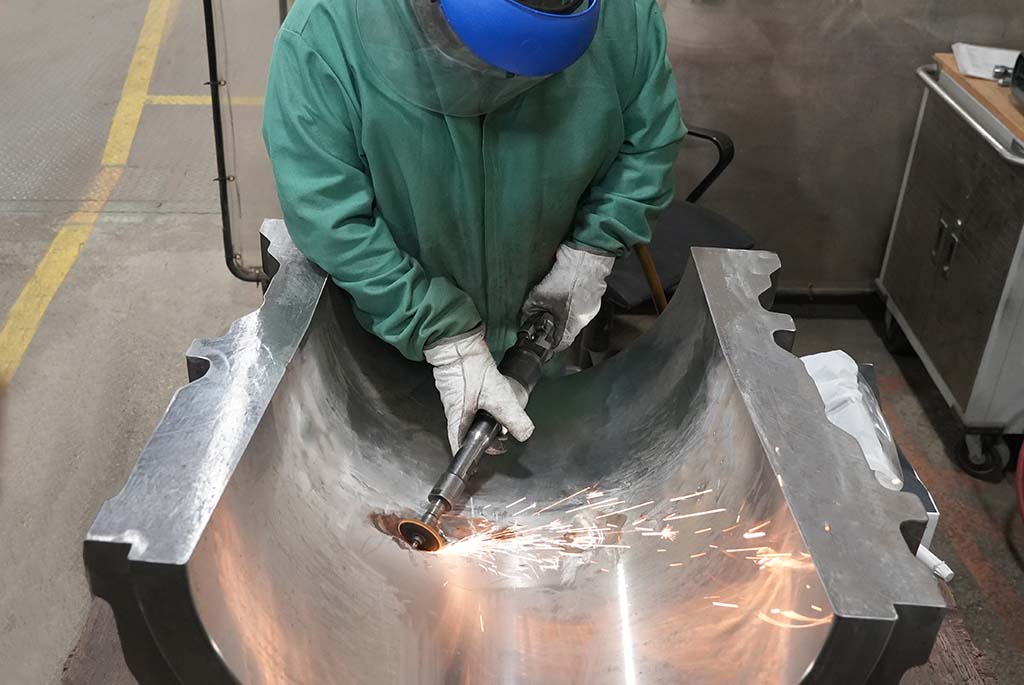Usual Welding Repair Issues and Exactly How to Address Them Effectively
Welding repair work frequently come across an array of concerns that can jeopardize the stability of the last item. Usual troubles consist of insufficient penetration, porosity, and imbalance, among others. Each problem presents special obstacles that require particular techniques for resolution. Recognizing these issues is essential for welders aiming to enhance their skills and end results. This discussion will certainly discover these typical welding repair service problems and efficient approaches to address them.
Insufficient Infiltration
Poor penetration happens when the weld steel fails to fully fuse with the base material, resulting in weak joints and potential architectural failings. This problem often comes from not enough warm input, incorrect electrode angle, or improper welding speed. Welders might experience inadequate infiltration because of a mistake of the required criteria for a particular product density or type. Furthermore, contamination on the base material's surface area can prevent effective bonding, aggravating the issue. To address inadequate infiltration, welders ought to assure proper settings on their devices and preserve a tidy work surface. Normal assessment of welds is recommended to identify any type of deficiencies early, permitting timely adjustments and the prevention of compromised structural integrity in bonded assemblies.
Porosity
Porosity is a common defect in welded joints that manifests as little gas bubbles entraped within the weld metal. This issue can compromise the stability of the weld, causing decreased stamina and possible failing under tension. Belgrade Welding. Porosity typically arises from contamination, wetness, or incorrect welding methods, which enable gases to run away into the liquified weld pool. To resolve porosity, welders ought to ensure appropriate surface preparation, preserve a clean functioning setting, and utilize suitable welding parameters. Additionally, selecting the appropriate filler product and shielding gas can reduce gas entrapment. Routine examination and screening of welds can help determine porosity early, ensuring prompt corrective actions are taken, consequently preserving the quality and reliability of the welded structure
Imbalance
Misalignment in welding can emerge from numerous variables, consisting of improper arrangement and thermal growth. Comprehending the root causes is essential for reliable resolution. Several modification techniques are available to straighten elements and assure structural integrity.
Sources of Imbalance
Welding imbalance often originates from a selection of underlying problems that can jeopardize architectural integrity. One main cause is incorrect fit-up of components before welding, which can bring about gaps and uneven surfaces. Variants in thermal expansion throughout the welding procedure can likewise cause distortion, particularly if the materials being signed up with have different coefficients of growth. Furthermore, inadequate fixturing and securing may fail to hold elements firmly in position, bring about movement throughout welding. Improperly kept tools, consisting of welding machines and devices, may present incongruities in the weld bead, further adding to misalignment. Driver mistake, stemming from insufficient training or experience, can likewise play a considerable duty in creating misaligned welds.

Adjustment Techniques Readily Available
Dealing with misalignment properly requires a combination of corrective methods tailored to the specific problems at hand. One typical method is the use of components or jigs to hold elements in the right setting throughout welding, ensuring constant alignment. Furthermore, pre-heating the materials can help in reducing distortion and improve fit-up. For substantial misalignment, mechanical adjustment methods, such as utilizing hydraulic jacks or clamps, can be utilized to correct the setting before welding. Post-weld warm treatment might also be essential to ease tensions brought on by imbalance. Mindful evaluation and change during the setup stage can avoid imbalance issues from coming to be substantial troubles, promoting a smoother welding process and boosting total architectural integrity.
Distortion
Distortion is a common difficulty in welding that can arise from numerous elements, including unequal cooling and heating. Understanding the causes of distortion is essential for executing reliable avoidance strategies. Addressing this concern not only enhances structural stability but additionally improves the overall top quality of the weld.
Sources of Distortion
When based on the extreme warmth of welding, products typically undergo adjustments that can bring about distortion. This sensation mainly occurs from thermal development and contraction throughout the welding procedure. As the weld location warms up, the product expands; upon cooling, it acquires, which can create internal anxieties. Furthermore, uneven heating throughout a work surface can aggravate these stresses, leading to bending or bending. The kind of product likewise plays a considerable function; metals with differing thermal conductivity and coefficients of growth may respond in a different way, bring about uncertain distortions. Additionally, poor joint layout and insufficient fixturing can add to imbalance during welding, raising the likelihood of distortion. Understanding these reasons is necessary for effective welding repair and avoidance approaches.
Avoidance Techniques
Reliable avoidance techniques for distortion throughout welding emphasis on regulating warmth input and making certain proper joint layout. Maintaining a constant warmth input aids to minimize thermal development and contraction, which can lead to distortion. Making use of strategies such as preheating the workpiece can likewise decrease the temperature slope, promoting consistent home heating. Additionally, selecting ideal joint designs, such as T-joints or lap joints, can enhance security and decrease stress concentrations. Carrying out appropriate fixturing to secure the workpieces in position even more aids in maintaining alignment throughout the welding procedure. Staggered welding series can distribute heat extra equally, protecting against localized distortion. By applying these approaches, welders can greatly lower the probability of distortion and enhance the total top quality of their welds.
Breaking
Cracking is a typical concern experienced in welding repairs, typically arising from numerous aspects such as improper air conditioning rates, product option, or inadequate joint prep work. The occurrence of cracks can considerably compromise the stability of the weld, causing possible failings throughout operation. To address this issue, welders have to initially evaluate the source, guaranteeing that products work and properly picked for the details application. Additionally, regulating the cooling rate throughout the welding process is crucial; quick cooling can induce tension and lead to breaking. Correct joint design and prep work also add to decreasing the threat. Applying these approaches can enhance weld quality and longevity, ultimately minimizing the possibility of cracking in ended up weldments.

Incomplete Combination
A significant problem in welding repairs is incomplete you can check here combination, which takes place when the weld steel does not adequately bond with the base product or previous weld passes - Montana Mobile Welding and Repair Welding. This problem can bring about weaknesses in the joint, potentially endangering the stability of the welded structure. Factors adding to insufficient combination consist of insufficient warmth input, incorrect welding strategy, and contamination of the surface areas being signed up with. To address this problem efficiently, welders should guarantee proper pre-weld cleaning and surface prep work, along with readjust their welding parameters to achieve appropriate infiltration and blend. Regular examination throughout the welding process can likewise aid identify insufficient combination early, enabling timely corrective actions to improve the total high quality of the weld
Overheating
While welding repairs can boost structural integrity, overheating provides a significant difficulty that can lead to material deterioration. Too much warm during welding can modify the mechanical buildings of steels, leading to minimized toughness, increased brittleness, and warping. This phenomenon is specifically essential in high-stress applications where structural reliability is vital. Recognizing getting too hot can involve visual assessments for discoloration or distortion, in addition to monitoring temperature throughout the welding procedure. To mitigate the threats connected with overheating, welders must utilize appropriate techniques, such as managing warm input, changing travel rate, and making use of suitable filler products. In addition, implementing pre- and post-weld heat therapies can help recover product homes and enhance the total quality of the fixing, making certain long-lasting efficiency and security.
Regularly Asked Questions
What Are the Common Indications of a Welding Problem?

Exactly How Can I Examine My Welds for Top quality?
To test welds for quality, one can dewalt welder utilize visual assessments, ultrasonic screening, and radiographic methods. Each strategy guarantees architectural honesty, recognizes problems, and validates adherence to defined standards, ultimately enhancing the integrity of the welded joints.
What Security Safety Measures Should I Take While Welding?
When welding, one need to focus on safety by using ideal personal protective tools, ensuring proper ventilation, protecting flammable products away, keeping a tidy work area, and see here now recognizing surroundings to avoid crashes and injuries.
Can I Repair a Weld Without Redesigning the Entire Joint?
Fixing a weld without redesigning the whole joint is feasible, depending upon the damage (Fabrication). Methods such as grinding, adding filler product, or utilizing a welding procedure can successfully address certain problems while preserving the bordering framework
What Devices Are Vital for Reliable Welding Services?
Essential tools for effective welding repair services include a welding device, cable brush, mill, protective equipment, clamps, and filler materials. Each tool plays an important duty in ensuring high quality and safety throughout the repair service procedure. Porosity commonly occurs from contamination, dampness, or improper welding strategies, which allow gases to run away right into the liquified weld swimming pool. Badly maintained equipment, consisting of welding makers and devices, might present variances in the weld grain, further contributing to misalignment. When subjected to the intense warmth of welding, products often undergo changes that can lead to distortion. Breaking is a common problem experienced in welding repairs, commonly resulting from numerous factors such as incorrect cooling prices, product selection, or insufficient joint prep work. A substantial concern in welding repairs is insufficient fusion, which occurs when the weld steel does not adequately bond with the base material or previous weld passes.
Comments on “Why welds crack and how Montana Mobile Welding and Repair avoids them”